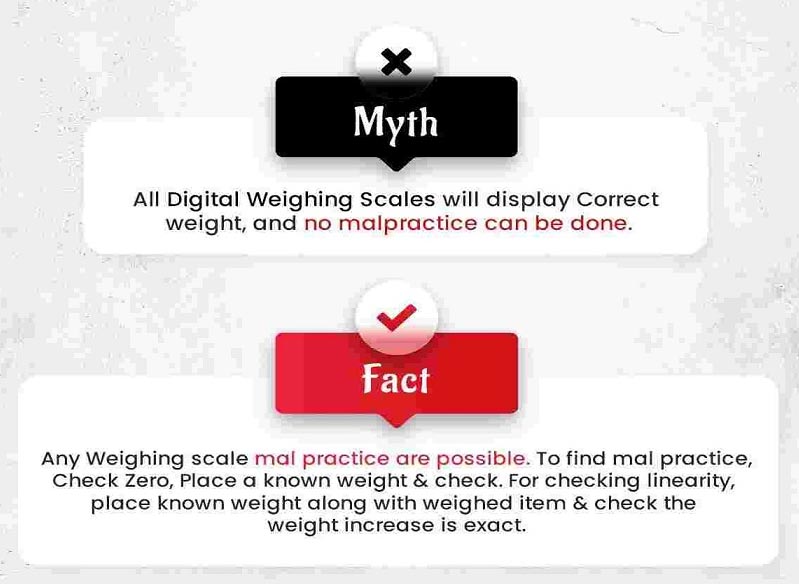NEWS
Preventing Scale Malpractice:

Ensuring Accuracy
weighing scales, including digital ones, can be susceptible to malpractice. Dishonest practices can occur for various reasons, including financial gain or misrepresentation of products. However, there are several methods and measures that can be taken to detect and prevent such dishonest practices:
- Regular Calibration:
- One of the most important steps in maintaining the accuracy of weighing scales is regular calibration. This involves comparing the scale’s readings to a known standard weight. Calibration should be performed by qualified professionals at regular intervals, and the results should be documented.
- Certification:
- Ensure that the weighing scale you use is certified by relevant authorities or organizations. Look for certifications like NIST (National Institute of Standards and Technology) in the United States or ISO (International Organization for Standardization) certification. These certifications indicate that the scale has met certain accuracy and reliability standards.
- Tamper-Evident Seals:
- Use tamper-evident seals or stickers on the scales. These seals are designed to break if someone attempts to tamper with the scale. Regularly check the seals for any signs of tampering.
- Secure Placement:
- Position the scale on a level and stable surface. Ensure that it is not wobbly or uneven, as this can affect its accuracy. Placing the scale in a location where it is less likely to be bumped or moved can also help prevent malpractice.
- Monitoring and Supervision:
- Implement monitoring and supervision procedures. Assign someone responsible for overseeing the use of the scale, especially in commercial settings. Regularly review the records and check for any anomalies.
- Security Cameras:
- Installing security cameras in the area where the scale is used can act as a deterrent to dishonest practices. It also provides a visual record that can be reviewed in case of suspicion.
- Random Inspections:
- Conduct random inspections or audits of the weighing process. Surprise checks can discourage malpractice and ensure compliance with regulations.
- Digital Scales with Built-in Features:
- If using digital scales, consider models with built-in features for tamper detection. Some advanced digital scales have software that can flag unusual activity or deviations in readings.
- Employee Training:
- Train employees or users of the scale on proper weighing procedures and ethical practices. Make them aware of the consequences of malpractice.
- Report Suspected Malpractice:
- Encourage employees and customers to report any suspected malpractice. Establish a clear process for reporting and addressing such concerns.
- Legal Consequences:
- Make sure users are aware of the legal consequences of malpractice, including fines and potential criminal charges. This can act as a strong deterrent.
- Periodic Maintenance:
- Regularly service and maintain the scale to ensure it functions correctly. Address any issues promptly to maintain accuracy.
In summary, while weighing scales can be susceptible to malpractice, a combination of regular calibration, certification, security measures, and vigilant monitoring can help detect and prevent dishonest practices. By implementing these strategies, you can maintain the integrity of the weighing process and ensure accurate and fair measurements.

